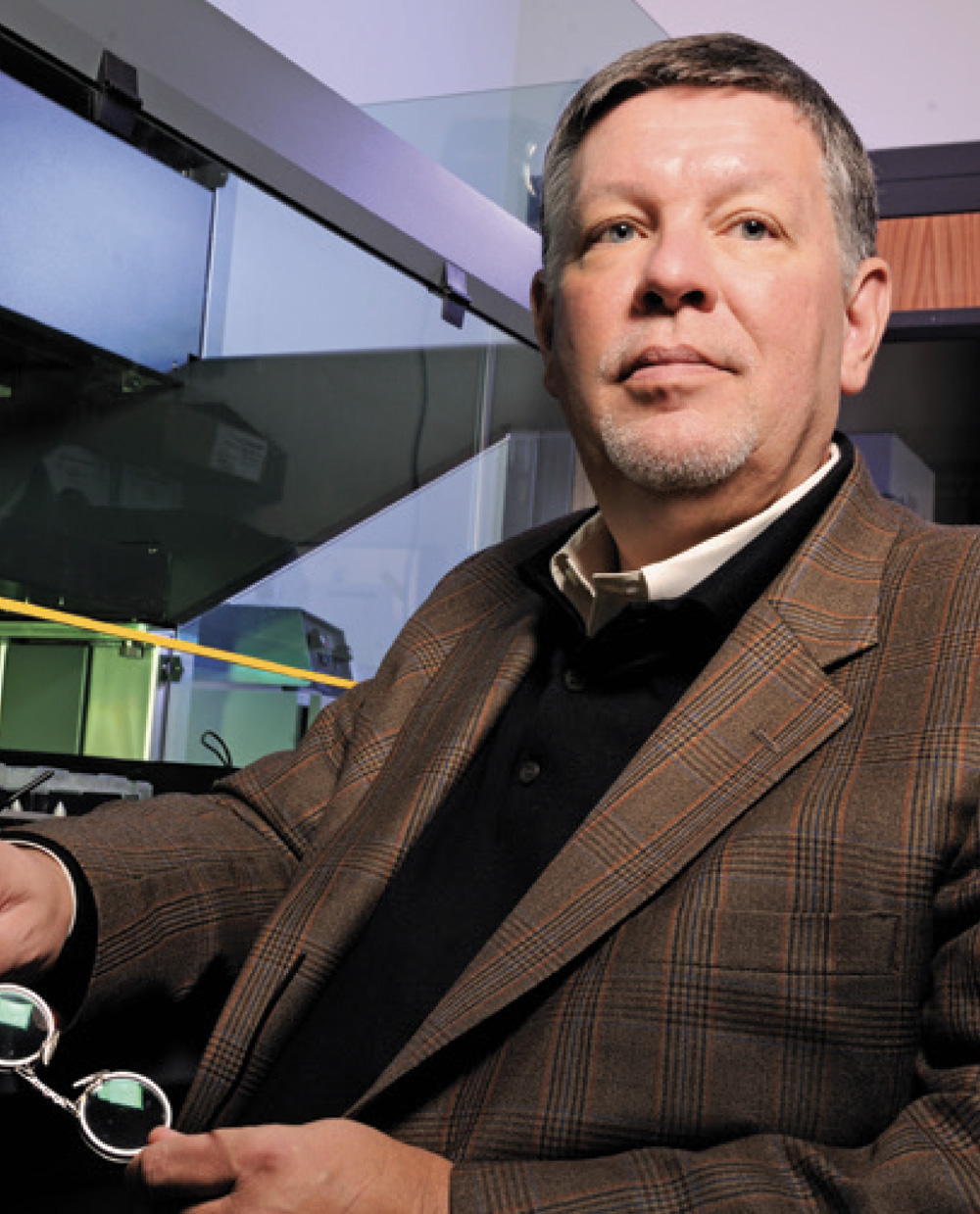
Emory's Department of Human Genetics was established in 2000 under the founding leadership of Dr. Stephen T. Warren. The department arose from the merger of two distinct entities: the basic science–oriented Department of Genetics and Molecular Medicine and the clinically-focused Division of Medical Genetics, which was then housed within the Department of Pediatrics.
The Division of Medical Genetics was founded in 1970 by Dr. Louis "Skip" Elsas. Early efforts in the Division centered on diagnosing and managing rare metabolic disorders. Trained at Yale under Leon Rosenberg—a pioneer in treating metabolic diseases through dietary intervention—Elsas helped shape the national landscape of medical genetics. He was the inaugural president of the Society for Inherited Metabolic Diseases and served as a scientific advisor during the expansion of Georgia’s newborn screening program in 1978. Since the inception of that program, the Division has played a pivotal role in follow-up care.
Among the Division's early recruits was Dr. Dean Danner, a biochemist studying maple syrup urine disease (MSUD), who later became interim chair of the Department of Genetics and Molecular Medicine (1996–2001) and of Biochemistry (2002–2006). Another foundational figure was Jean Priest, who directed Emory's Prenatal Diagnosis Program until 1990. Initially, the Division's laboratories were based in the Woodruff Memorial Research Building, while the Emory Genetics Laboratory (EGL) operated out of the Steiner Building near Grady Memorial Hospital before relocating to the Pediatrics Building on Ridgewood Drive.
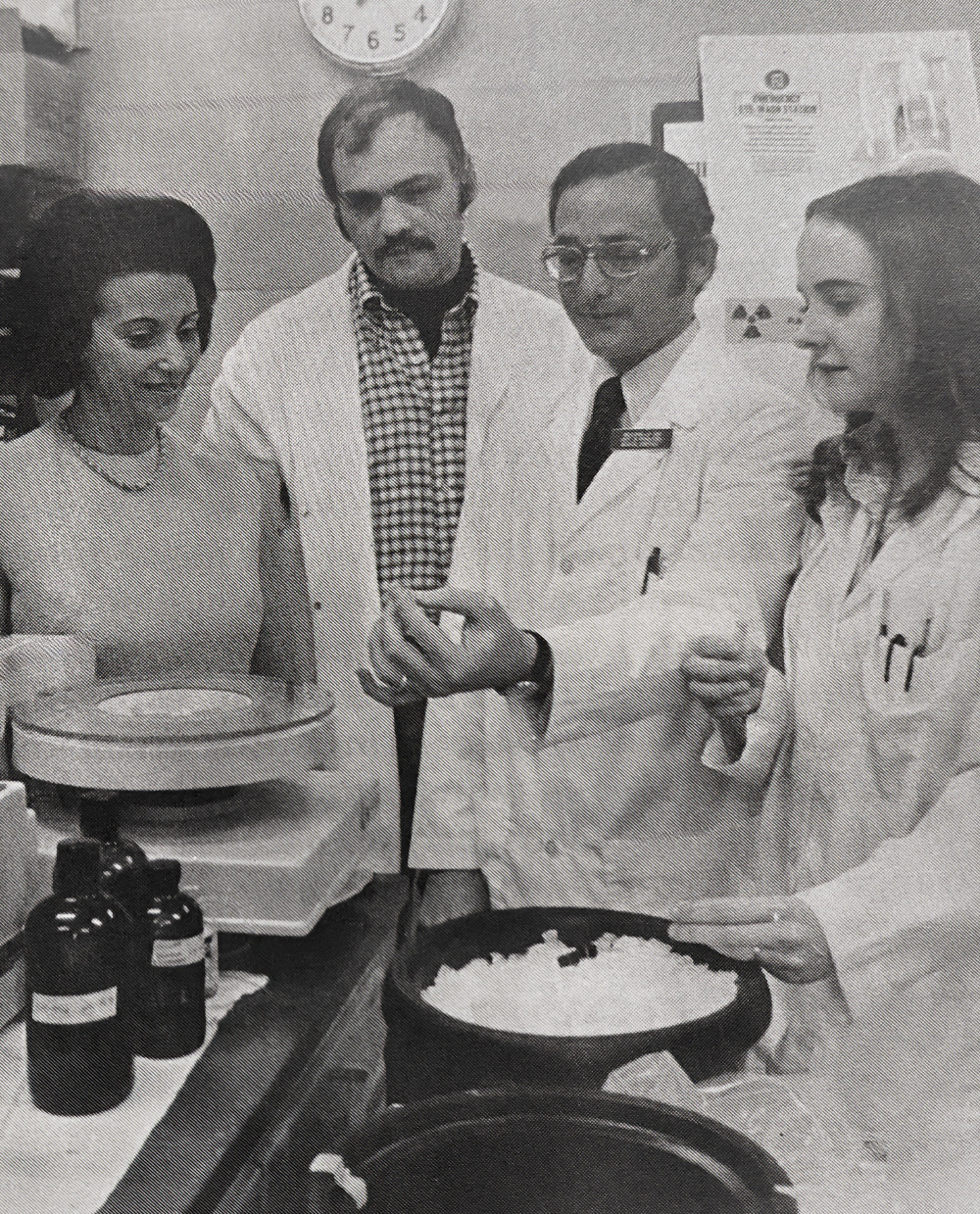
Elsas fostered a multidisciplinary environment, integrating nutritionists and supporting research on dietary supplementation for inherited disorders. He informally trained nurses with an interest in genetics and then recruited genetic counselors as the field gained formal recognition. Emory's first nutrition clinic for metabolic disorders was launched in the early 1980s by Phyllis Acosta, who had previously helped develop the first nutritional guidelines for phenylketonuria. Elsas's research interests were wide-ranging, encompassing metabolic and other rare genetic disorders. With Dr. Nicola Longo (later of the University of Utah and now at UCLA), he published seminal work on Donohue syndrome, a rare insulin receptor disorder. Collaborating with neurologist Dr. Linton Hopkins, he helped map the gene locus for Emery-Dreifuss muscular dystrophy, focusing on two large multigenerational families.
Dr. Paul Fernhoff joined the Division in 1978 and became a central figure in the development of newborn screening in Georgia, serving as the first chair of the state's Newborn Screening Advisory Committee. He played a critical role in acquiring tandem mass spectrometry equipment for the state’s newborn screening program and oversaw a major expansion of the program in 2007. Fernhoff also founded Emory's Lysosomal Storage Disease Center, serving as principal investigator for more than 20 clinical trials. He was widely respected for his dedication to patient care and advocacy for children with rare diseases.
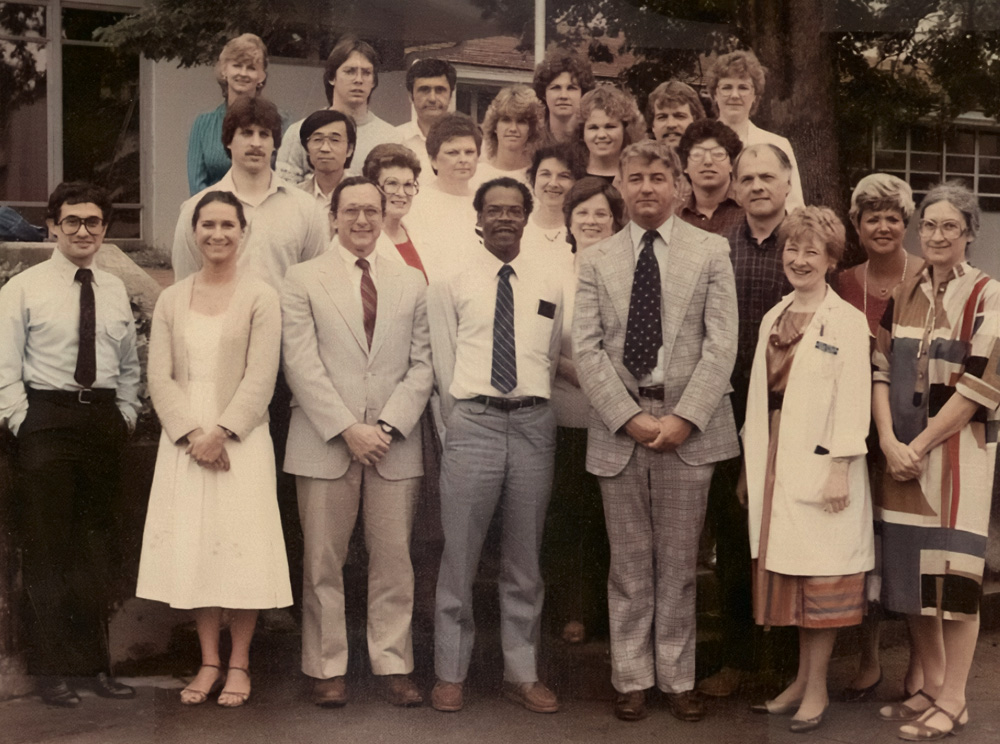
In parallel, faculty destined to lead the basic science arm of the department were recruited through Biochemistry, including Dr. Stephen Warren and Dr. Douglas Wallace. Wallace joined Emory from Stanford in 1983 and partnered with neurologist Dr. John Shoffner to identify the first human disease linked to mitochondrial DNA: Leber’s hereditary optic neuropathy. Their research connected mitochondrial DNA mutations to several rare diseases. When Wallace founded the Department of Genetics and Molecular Medicine, it included a small group of faculty, including Dr. Danner; Dr. Judith Fridovich-Keil, an expert on galactosemia; Dr. Stephanie Sherman, a genetic epidemiologist specializing in Fragile X syndrome and Down syndrome; and Drs. Xiao-Jiang Li and Shi-hua Li, who studied the molecular basis of Huntington’s disease.
Wallace departed for the University of California, Irvine, in 2001, and Elsas moved to the University of Miami in 2002. Their departures allowed Warren to unite the clinical and basic science efforts under one umbrella, with the newly built Whitehead Biomedical Research Building serving as a central hub. Warren’s vision—to integrate basic researchers, clinicians, and genetic counselors in a collaborative environment—continues to shape the department’s identity. The department’s current strengths reflect both Warren’s strategic faculty recruitment in neuroscience and genetics, and the longstanding clinical programs established by Elsas and Fernhoff.
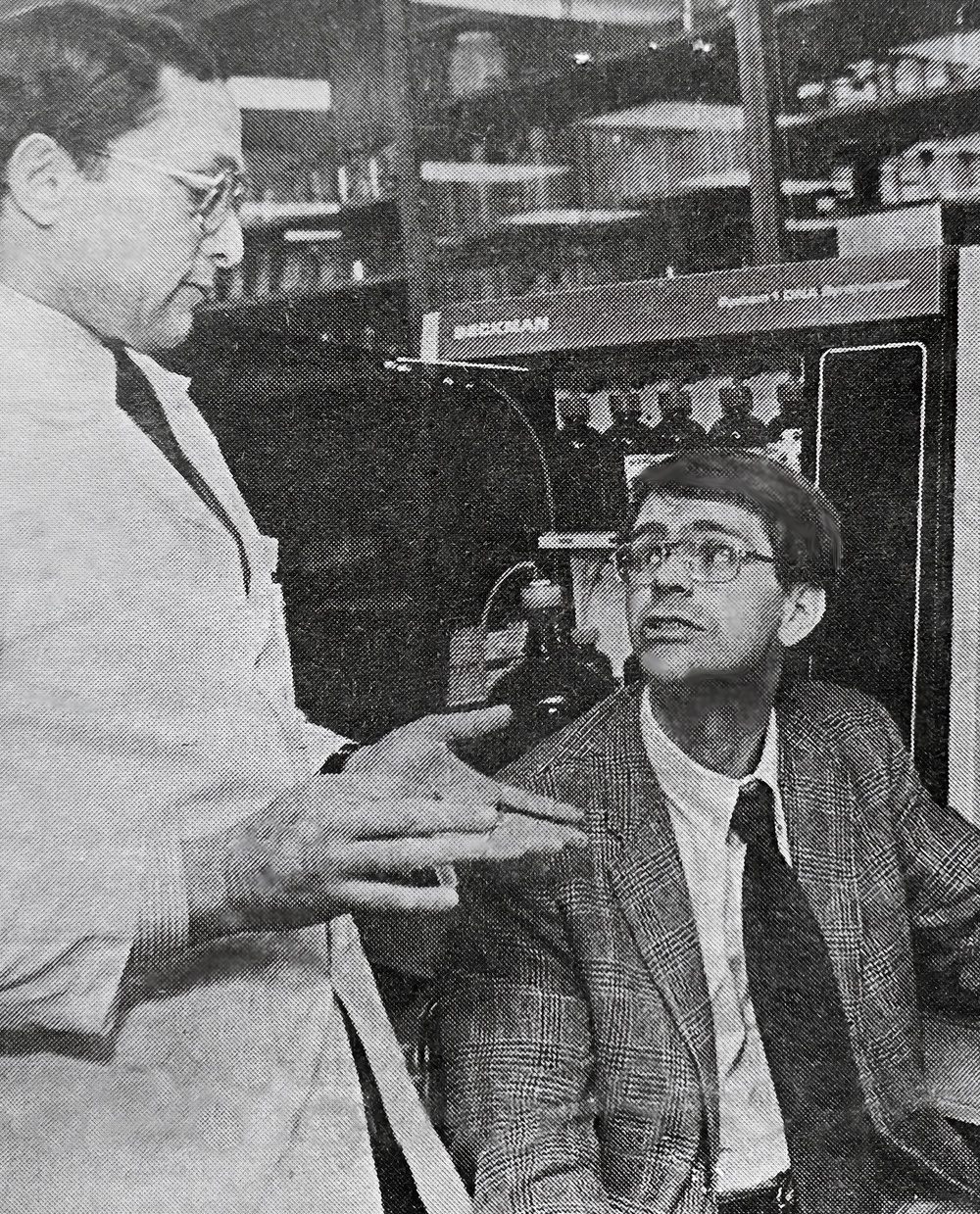
Warren had joined Emory in 1985 while developing a method to clone the gene responsible for Fragile X syndrome. His early experiences with families affected by genetic disorders as a graduate student at Michigan State University informed his commitment to translational research and patient-centered care. He went on to serve as editor-in-chief of the American Journal of Human Genetics, associate editor of PNAS, and organizer of a series of conferences at Cold Spring Harbor on Fragile X. He was a Howard Hughes investigator from 1991 to 2002, resigning in order to serve as chair of the newly integrated department.
Warren's research on Fragile X provided critical insights into genomic instability and brain development, as well as into other triplet repeat disorders such as Huntington’s disease and myotonic dystrophy. The department remains committed to serving families affected by Fragile X while also leading research on other chromosomal and genomic syndromes. Faculty have led initiatives such as the National Down Syndrome Project, a clinical and research program for 22q11 deletion syndrome, and studies of 3q29 deletion syndrome, a strong genetic risk factor for schizophrenia.
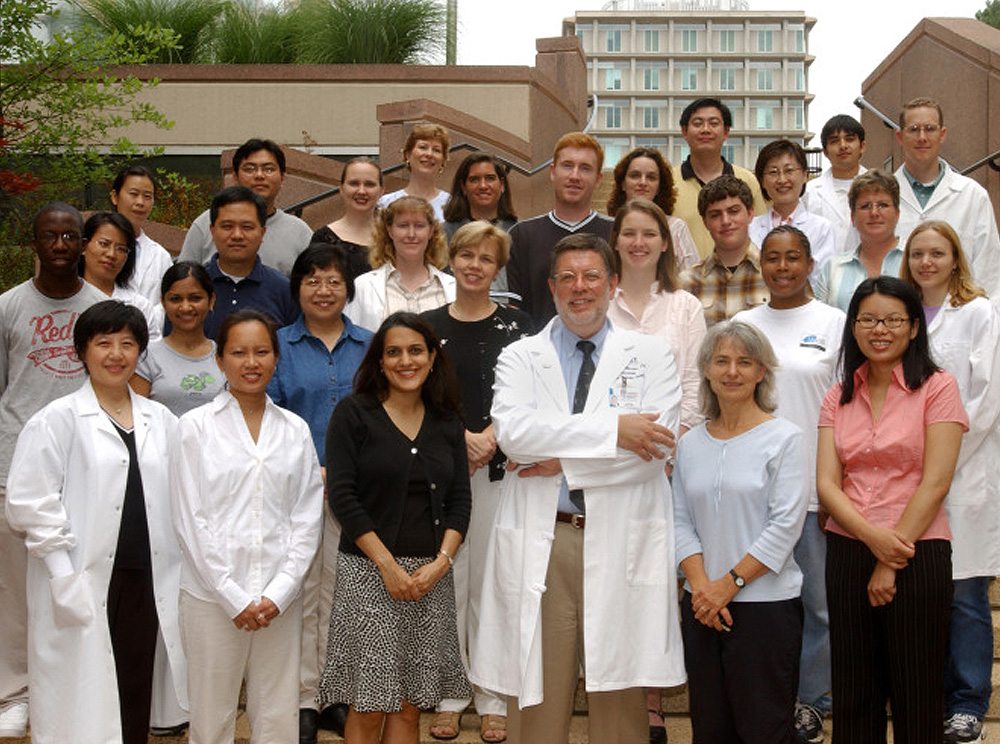
Warren recruited numerous faculty who remain integral to the department today, including Drs. Michael Epstein, David Weinshenker, Tamara Caspary, and Andrew Escayg. Dr. David Ledbetter was recruited from the University of Chicago in 2003 to lead the clinical division. Starting in 2004, EGL and the division’s clinical programs were based off-campus at 2165 North Decatur Road. Under the leadership of Dr. Madhuri Hegde, EGL made advances in diagnostics and thrived commercially during rapid changes in genetic sequencing technology. However, Ledbetter left for Geisinger Health System in 2010, and when Fernhoff died in 2011, the division was left with only two relatively junior medical genetics faculty.
Under the leadership of the current division chief, Dr. Michael Gambello, who joined the Department in 2012, the division was revitalized. He recruited experienced faculty, including Drs. Hong Li and William Wilcox, and trained new specialists who joined our faculty, such as Dr. Rossana Sanchez Russo and Kristen Murphey. In response to growing competition in genetic diagnostics, EGL was sold to a private company in 2014. Clinical services moved to the Emory Clinic Building B on Clifton Road in 2017. A new Genetic Clinical Trials Center was established in the Woodruff Memorial Research Building to support translational research in Fragile X, Down syndrome, skeletal dysplasias, autism, lysosomal storage diseases, and many other genetic disorders. Basic research operations remain anchored at Whitehead.
The department launched an accredited Genetic Counseling Training Program in 2012, led by Dr. Cecelia Bellcross, an expert in breast cancer risk. In 2013, genetic counselor Karen Grinzaid founded JScreen, a national carrier screening and counseling service, which was spun off from Emory and the department in 2024.
In 2019, after nearly two decades as the founding Chair of the Department, Dr. Warren announced his decision to step down, remaining on the faculty. He passed away unexpectedly in June 2021. Dr. Peng Jin—who had trained with Dr. Warren and established his own laboratory at Emory in 2004—was appointed Chair in March 2020, just before the onset of the COVID-19 pandemic. Under his leadership, both the basic research and clinical wings of the department continue to thrive.

